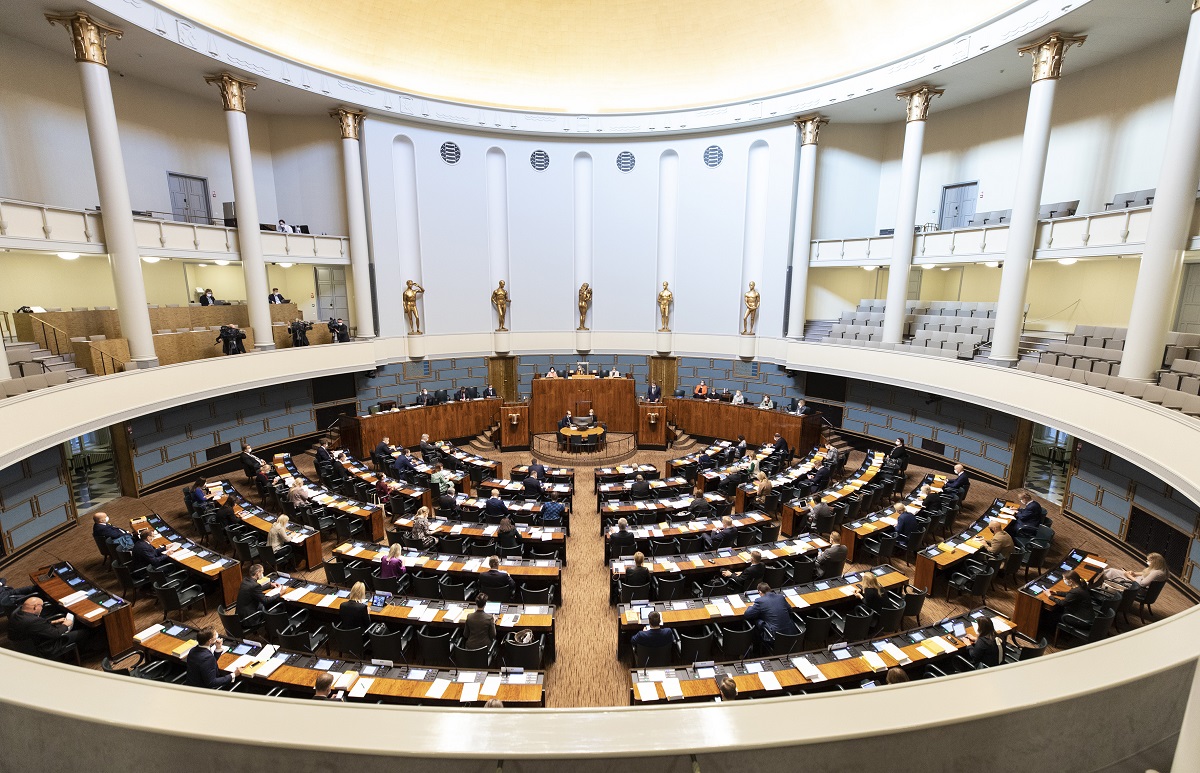People in Finland elected a new Parliament on the 2nd of April. The former Finnish Government received a lot of international attention as it was led by five women, many of whom were under 40 years old. Sanna Marin, from the Social Democratic Party (SDP), became the world’s youngest serving Prime Minister at the age of 34 in 2019.
Altogether 200 MPs representing nine political parties started their work in the Finnish Parliament in April. Two parties more on right side of the political spectrum, the National Coalition Party and the Finns Party, became the two biggest parties in the elections. Marin’s Social Democrats also managed to gain more seats and is the third biggest party. However, three other parties in Marin’s Government – the Centre Party, the Greens and the Left Alliance – suffered major losses in the elections.
What does the new Parliament look like from the point of view of inclusiveness and diversity? Finland has a long history of women’s political participation, as the country was the first one to give women the right to vote and stand as candidate in 1906. In the first parliamentary elections in 1907, 19 women (9.5%) were elected to the Parliament. Despite a record number of female candidates (43%) in this year’s elections, the number of elected women dropped by two. 92 women (46%) were elected, compared to 94 women (47%) in the 2019 elections, in which the highest number of women in the Finnish Parliament so far was elected.
Women’s representation is higher in the Parliament than at the municipal level. In the most recent municipal elections in 2021, 40% of the elected councillors were women. This is the highest percentage so far. However, women’s share of chairs of the municipal councils and municipal boards is a bit lower: 35% of the municipal council chairs and 36% of the municipal board chairs are women. In the 2022 county elections, the majority (53%) of those elected were women. The county elections were the first in Finland, as the wellbeing services counties are a new administrative structure that started to operate in 2022.
Despite a record number of female candidates in this year’s elections, the number of elected women dropped by two.
The average age of MPs in the new Parliament is 47, which is the same as in the 2019 elections. However, the number of MPs under the age of 30 dropped by one. There are now 7 MPs who are younger than 30. The youngest MP is 23-year-old Olga Oinas-Panuma from the Centre Party. Young people remain underrepresented in the Parliament: 17% of the voting age population is 18–29 years old, but their percentage of the MPs is only 3.5%. On the municipal as well as county level, the average age of councillors in Finland is currently 51.
In the previous Parliament, there were two MPs that had migrated to Finland. Neither was re-elected, but Nasima Razmyar (Social Democratic Party), who has moved to Finland from Afghanistan as child and is currently Deputy Mayor of the City of Helsinki, was elected. Razmyar is also a former MP and was elected in the Finnish Parliament in 2015 as the first MP with a refugee background. In addition, three MPs in the new Parliament have one parent who was born abroad.
184 MPs out of 200 (92%) speak Finnish as their mother tongue, and 15 (7.5%) speak Swedish which is the second official language of Finland and the mother tongue of 5% of the population. Nasima Razmyar’s mother tongue is Dari.
In the elections, there were several candidates with disabilities, but no-one with a visible disability was elected. Only one person with a physical disability has ever been elected as an MP in Finland – in the 1980s.
More than half (102) of the MPs in the new Parliament are elected to three different levels of decision-making: national, county and municipal. At the moment, there are no limitations to how many elected positions politicians can take, but after the creation of the wellbeing services counties, there has been some discussion about the issue. Concentration of power, possible conflicts of interest and lack of time are some of the challenges. Some newly elected MPs may also give up their duties as councillors at the municipal or county level.
Only one person with a physical disability has ever been elected as an MP in Finland.
All in all, Finland fares well when it comes to gender equality of the different decision-making bodies. However, when it comes to representation of youth, immigrants and persons with disabilities, there is still room for improvement. It should be noted, that especially on the municipal level, in some municipalities there are separate advisory committees for e.g. persons with disabilities and immigrants as well as youth councils, in which these groups can make their voices heard. These committees have however no power to make decisions.
Demo Finland supports the participation of women, young people and persons with disabilities in decision-making in Finland by organising training programmes for political parties’ women and youth organisations and by working with political parties to enhance disability inclusion.

